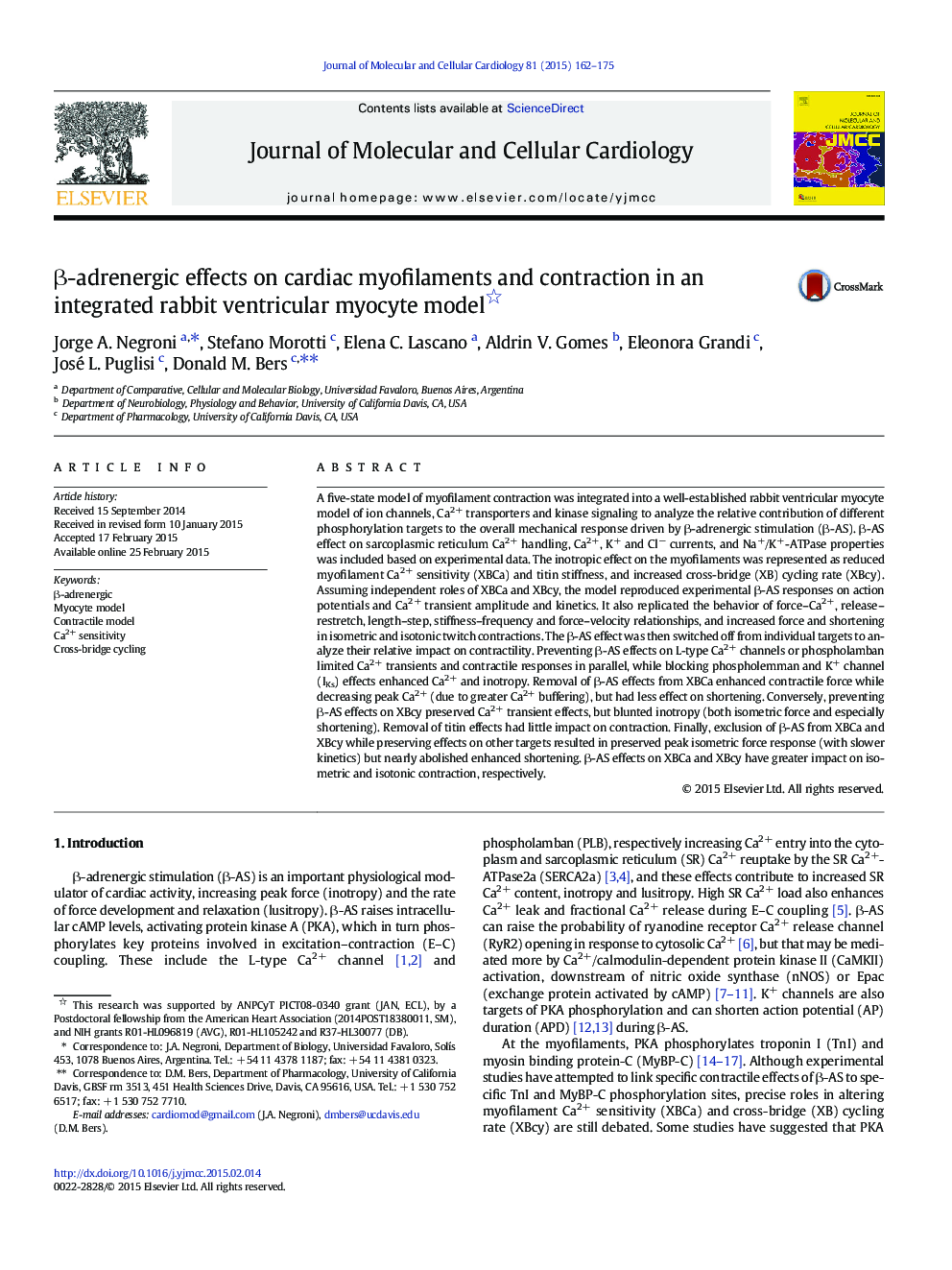| کد مقاله | کد نشریه | سال انتشار | مقاله انگلیسی | نسخه تمام متن |
|---|---|---|---|---|
| 2190507 | 1550424 | 2015 | 14 صفحه PDF | دانلود رایگان |

• β-AS effects on cardiac contraction are analyzed with a new computer model.
• The model reproduces a range of experiments involving force and length changes.
• Impact of PKA targets to β-AS effects on AP, Ca2 + and contraction is studied.
• ICa, PLB, PLM and IKs effects dominate in the β-AS increase in Ca2 + transients.
• Increased XBcy compensates for lower myofilament Ca2 + sensitivity during inotropy.
A five-state model of myofilament contraction was integrated into a well-established rabbit ventricular myocyte model of ion channels, Ca2+ transporters and kinase signaling to analyze the relative contribution of different phosphorylation targets to the overall mechanical response driven by β-adrenergic stimulation (β-AS). β-AS effect on sarcoplasmic reticulum Ca2+ handling, Ca2+, K+ and Cl− currents, and Na+/K+-ATPase properties was included based on experimental data. The inotropic effect on the myofilaments was represented as reduced myofilament Ca2+ sensitivity (XBCa) and titin stiffness, and increased cross-bridge (XB) cycling rate (XBcy). Assuming independent roles of XBCa and XBcy, the model reproduced experimental β-AS responses on action potentials and Ca2+ transient amplitude and kinetics. It also replicated the behavior of force–Ca2+, release–restretch, length–step, stiffness–frequency and force–velocity relationships, and increased force and shortening in isometric and isotonic twitch contractions. The β-AS effect was then switched off from individual targets to analyze their relative impact on contractility. Preventing β-AS effects on L-type Ca2+ channels or phospholamban limited Ca2+ transients and contractile responses in parallel, while blocking phospholemman and K+ channel (IKs) effects enhanced Ca2+ and inotropy. Removal of β-AS effects from XBCa enhanced contractile force while decreasing peak Ca2+ (due to greater Ca2+ buffering), but had less effect on shortening. Conversely, preventing β-AS effects on XBcy preserved Ca2+ transient effects, but blunted inotropy (both isometric force and especially shortening). Removal of titin effects had little impact on contraction. Finally, exclusion of β-AS from XBCa and XBcy while preserving effects on other targets resulted in preserved peak isometric force response (with slower kinetics) but nearly abolished enhanced shortening. β-AS effects on XBCa and XBcy have greater impact on isometric and isotonic contraction, respectively.
Journal: Journal of Molecular and Cellular Cardiology - Volume 81, April 2015, Pages 162–175